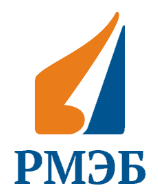"ASSEMBLING A MULTISENSORY DEVICE FOR MONITORING AND ASSESSING CONCRETE CURING CONDITIONS "
DOI:
https://doi.org/10.31489/2022No1/90-98Keywords:
concrete strength, sensors, continuous phenomena, Arduino, monitoring.Abstract
The conventional direct and indirect methods to study the mechanical characteristics of concrete are mainly performing discrete measurements, omitting the continuous internal and external phenomena occurring in the concrete body that may significantly affect its strength and quality. This study presents a multisensory device and a method that simultaneously measures and assesses the impact of curing temperature, ambient temperature and relative humidity on the concrete strength. The device was assembled on the basis of Arduino Pro Mini microcontroller connected with various sensors, as well as clock reading and memory modules. The method proposed to assess the impact of different factors on concrete strength is based on strength tests and their confidence curve, monitoring of concrete curing conditions, correlation and weighting techniques. The performance of proposed device and its method was justified experimentally using the concrete cubic specimens of different size. To visualize the specimens monitoring results the color gradations, petal and bar chart representations were used, and taken into account for the future implementation of a software interface for the multisensory device.
References
"1 Gerald B., Neville, P.E. The Strength of Concrete, in Concrete Manual. International Code Council. 2015, pp. 24–31. Available at: https://shop.iccsafe.org/media/wysiwyg/material/9090S15-Sample.pdf.
IAE. Guidebook on non-destructive testing of concrete structures. Vienna: IAEA. 2002. Available at: https://www.osti.gov/etdeweb/servlets/purl/20305546.
Prasad C. (no date) 20 Factors Affecting Durability of Concrete, Structural Guide. Available at: https://www.structuralguide.com/20-factors-affecting-durability-of-concrete/.
GOST 10180. Concretes. Methods for strength determination using reference specimens. 2012. [in Russian]
GOST 22690. Concretes. Determination of strength by mechanical methods of nondestructive testing. 2015. [in Russian]
Lorkowski P. Monitoring Continuous Phenomena. CRC Press. 2021. doi: 10.1201/9780429440960.
Lukpanov R., et al. Performance of maturity method for estimation of concrete strength based on cubic specimens. Technobius. 2021, 1(4), p. 0008. doi: 10.54355/tbus/1.4.2021.0008.
Utepov Y.B. et al. Prototyping an embedded wireless sensor for monitoring reinforced concrete structures. Computers and Concrete. 2019, 24(2), pp. 95–102. doi: 10.12989/cac.2019.24.2.095.
Taheri S. A review on five key sensors for monitoring of concrete structures. Construction and Building Materials. 2019, 204, pp. 492–509. doi: 10.1016/j.conbuildmat.2019.01.172.
ASTM C1074. Standard Practice for Estimating Concrete Strength by the Maturity Method. USA, West Conshohocken, PA: American Society for Testing and Materials. 2019.
Sun B., et al. Prediction of early compressive strength of mortars at different curing temperature and relative humidity by a modified maturity method. Structural Concrete. 2021, 22(S1). doi: 10.1002/suco.202000041.
Soutsos M., et al. Effect of in situ temperature on the early age strength development of concretes with supplementary cementitious materials. Construction and Building Materials. 2016, 103, pp. 105–116.
Barroca N., et al. Wireless sensor networks for temperature and humidity monitoring within concrete structures. Construction and Building Materials. 2013, 40, pp. 1156–1166. doi: 10.1016/j.conbuildmat.2012.11.087.
Giatec S. The World’s Leading Wireless Concrete Sensor for Temperature and Strength Monitoring, Giatec Scientific Inc. Available at: https://www.giatecscientific.com/products/concrete-sensors/smartrock-maturity-meter/ (Accessed: 23 March 2022).
Hilti. HCS TH1 Concrete Sensors, Concrete Monitoring Systems. 2022. Available at: https://www.hilti.com/c/CLS_MEA_TOOL_INSERT_7127/CLS_CONCRETE_MONITORING_SYSTEMS/r13232456 (Accessed: 23 March 2022).
Novak L., et al. Estimation of coefficient of variation for structural analysis: The correlation interval approach. Structural Safety. 2021, 92. doi: 10.1016/j.strusafe.2021.102101.
Utepov Y.B., et al. Complex Maturity Method for Estimating the Concrete Strength Based on Curing Temperature, Ambient Temperature and Relative Humidity. Applied Sciences. 2021, 11(16), p. 7712. doi: 10.3390/app11167712.
"













